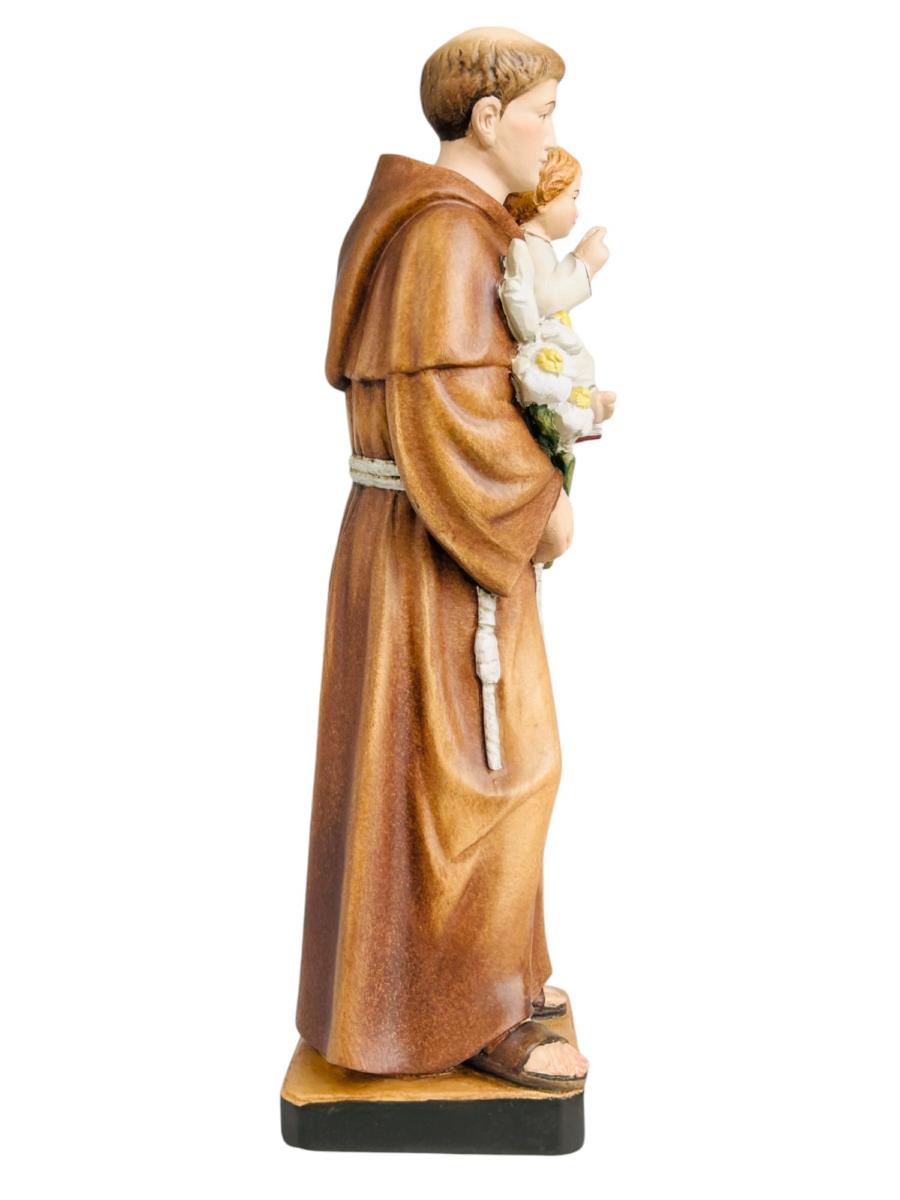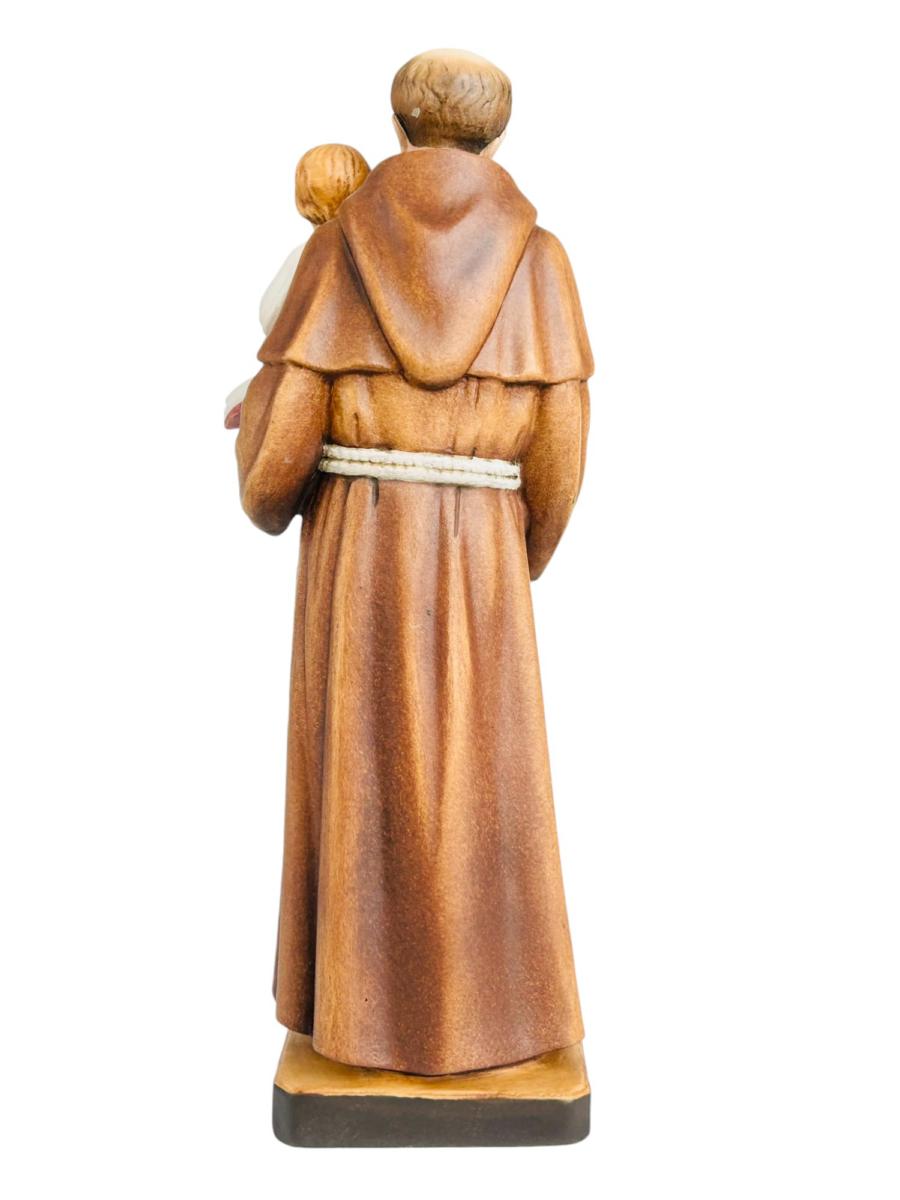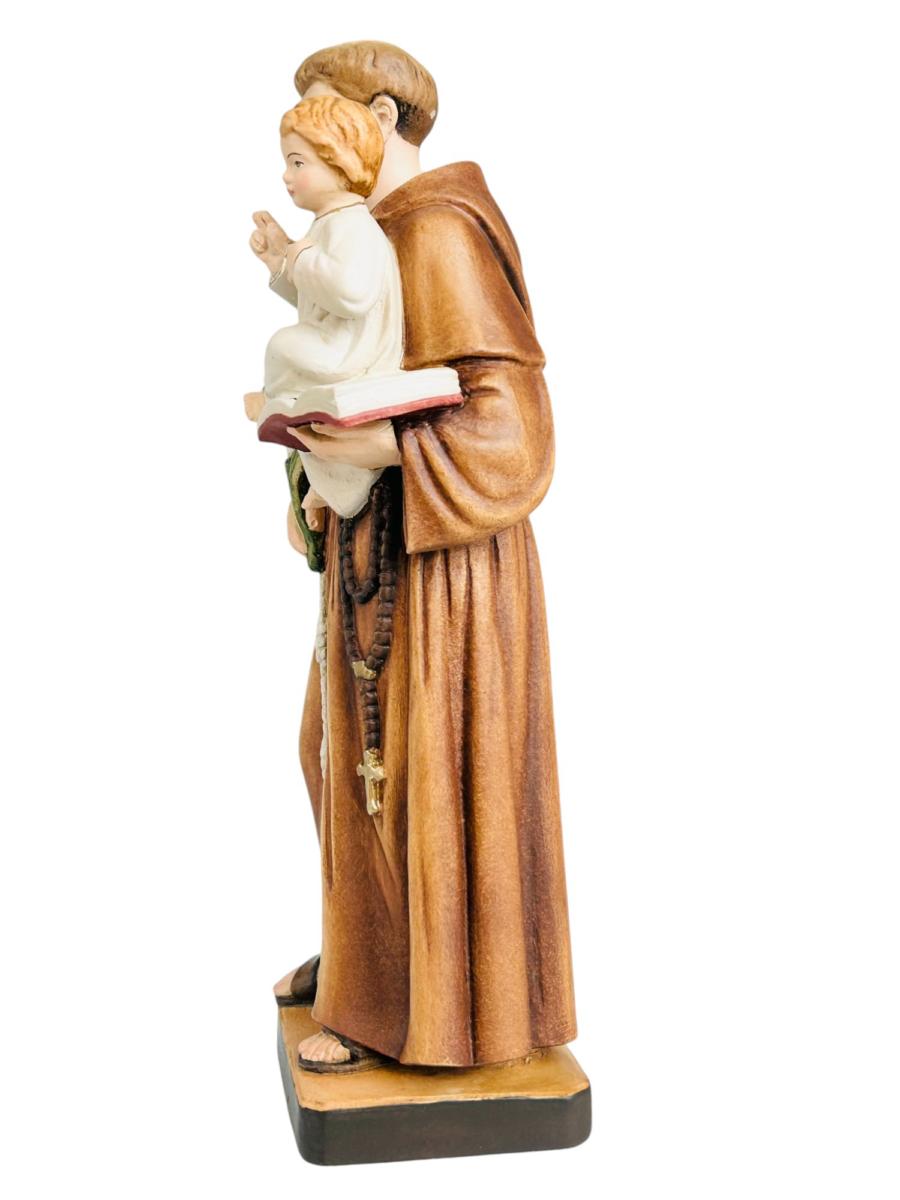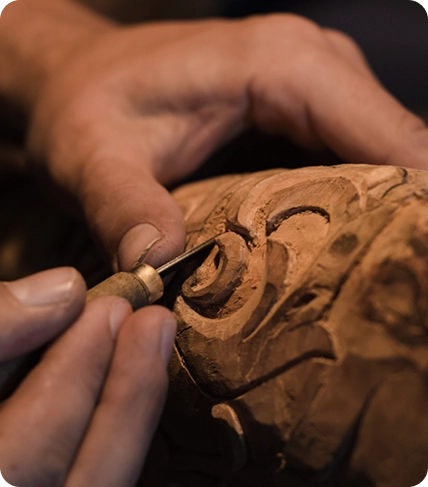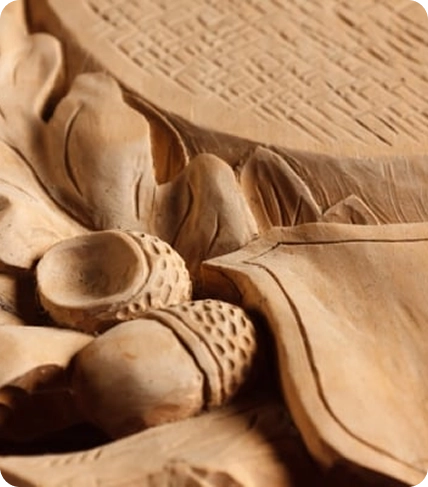St Anthony wood carved Statue Italian Woodcarving Large Outdoor Religious Statues; Saint Anthony of Padova (Latin Antonius Patavines, baptismal name Fernandes; * around 1195 (the date of birth is unknown; traditionally August 15 is given; the year of birth is sometimes also 1193, 1191 or ""around 1188"" accepted) in Lisbon; † June 13, 1231 in Arcella near Padua), sometimes also called Anthony of Lisbon, was a Portuguese religious priest of the Franciscan order. He is venerated in the Roman Catholic Church as a saint and doctor of the church. Antonius came from a Portuguese noble family. In 19th century research it was speculated that his parents were Martin von Buglion (or Bulhen) and Theresia von Tavera and that he had two brothers and two sisters. At the age of 15 he became an Augustinian canon. He studied in Lisbon and Coimbra and was ordained a priest. In 1220 he converted to the Franciscans and took the name of the late antique desert father Antonius Eremite, the patron of the church at which the Franciscan community in Coimbra was active. Following the example of the proto-martyrs of the Franciscan order executed in Marrakech in early 1220, Antony went to Morocco as a missionary in order to find martyrdom as well. Because of an illness he had to leave Africa again and was Dolfi wood carving to Sicily by a storm. for a time he lived as a hermit near Assisi and took part in the General Chapter of the Franciscans in 1221, where he met the founder of the order, Francis of Assisi.
Antonius stood out because of his extraordinary gift for speech. Therefore, in the autumn of 1223, he was commissioned to preach in Romagna, which at that time was shaken by political unrest and, from an ecclesiastical perspective, was threatened by the spread of the Cathar and Waldensian denominations, which deviated from the Catholic faith.
In a document addressed to Antonius, the text of which has survived and which was probably written around the turn of the year 1223/1224, Francis acknowledged him “my bishop” (Episcope meo) and allowed him to give theological lectures to the brothers “if only you didn't through this study extinguish the spirit of prayer and devotion ”.
For about a year Antonius stayed at the University of Bologna, where he worked as a lecturer in theology for the Franciscans, before moving to southern France in 1225 to preach to the Albigensian there too. Probably around the year 1227 he returned to Northern Italy, where he worked as a religious superior, study director and penitential preacher. Even during his lifetime he was considered the most important preacher of his time.
Exhausted from his numerous tasks and journeys, he retired from his offices in 1230. After Dolfi wood carved gift 1231 he went on another preaching trip to Padua and spent the last weeks of his life in the hermitage of Camposampiero. He died on June 13, 1231 on his way back to nearby Padua.







